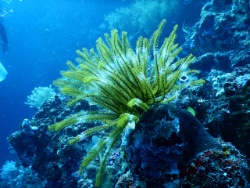Agenda to improve sexual health of people in Pacific
Revolutionary agenda to improve sexual health of people in Pacific
15 January 2015
Suva – With concern over high rates of teenage pregnancy and sexually transmitted infections (STIs), a collaborative effort is getting under way to implement an ambitious sexual health agenda for the Pacific.
Promoting sexual and reproductive rights and reducing the prevalence of STIs and HIV, adolescent pregnancy, gender-based violence and sexual assault – including among vulnerable populations – are at the heart of a comprehensive Pacific Sexual Health and Well-Being Shared Agenda for 2015-2019.
Representatives of governments, civil society organisations, health networks and key populations took part in a 16-month consultation process to shape the new health agenda, led by the Secretariat of the Pacific Community (SPC) and funded by the Pacific Island Response Fund for HIV/STI, which is supported by the Government of Australia and the New Zealand Aid Programme, and by the Global Fund to Fight AIDS, Tuberculosis and Malaria.
Endorsed by Health Ministers from all 22 Pacific Island countries and territories in July 2014, the Shared Agenda is available here: http://bit.ly/1Bg0sxn.
This week work begins on detailed planning for its implementation among regional development partners aimed at strengthening coordination to support countries and national stakeholders in shifting the focus from single diseases to a rights-based approach.
In the Pacific context, the populations most vulnerable to poor sexual health and well-being are people living in poverty, people living with HIV or non-communicable diseases, women, young people, people living with disabilities, and those who identify as lesbian, gay, bisexual, transgender, queer and intersex.
An aim of the new agenda is to expand the reach of sexual health services through greater integration with related services and programmes which is of particular importance for Pacific Islands where sexual and reproductive health services are not always available at the primary health care level.
The agenda complements and builds on other regional plans, including the Pacific Youth Development Framework. Key points to be addressed from 2015 onwards, as per the document, include:
• Health systems suffer from a shortage of human and financial resources which means people in the Pacific, particularly on remote outer islands, are not able to access comprehensive sexual and reproductive health information, services and commodities;
• Many services focus on married women and expectant mothers while the range of tailored services for single women, older women, men and transgender people is low or non-existent;
• Teenage pregnancy is generally high – for instance the Republic of the Marshall Islands has the region’s highest rate of teenage pregnancy with 85 births per 1,000 females aged 15–19 years, well above the global average;
• Sexually transmitted infections are hyper-endemic in the region – on average 25 per cent of sexually active young people have an STI and in some countries this is as high as 40 per cent;
• The estimated prevalence of HIV amongst adults aged 15 to 49 in the 17 countries with HIV cases in the Pacific is less than 0.1 per cent. All but Papua New Guinea are on track to achieve the goal of universal access to treatment for HIV and AIDS. However, factors such as high rates of STIs and low condom use mean that acquiring HIV remains a risk for the region;
• Half of all Pacific Island countries and territories are on track to improving maternal health but progress towards universal access to reproductive health care has been slow, with contraceptive use averaging around 26 per cent compared to the developing region average of 61 per cent;
• The human papillomavirus infection (HPV), which can lead to reproductive cancers, is an emerging area of concern although there is limited data on the extent of HPV transmission in the region;
• Discriminatory legislation, policy and social practices act as barriers to sexual health and well-being and promote stigma and discrimination.
The document recognises that to improve sexual health and well-being in the Pacific, emphasis needs to be placed on the delivery of accessible, comprehensive and high-quality sexual and reproductive health services and programmes based on individual country needs.
Its implementation will be guided by five key approaches, namely: improving the flow of strategic data to inform policy and planning; expanding links between services for STIs and HIV, sexual and reproductive health and other related services; health communication and sexuality education; empowering stakeholders to create inclusive environments through legal, social, structural and policy reform, and tailoring services and programmes to meet the needs and rights of key populations.
With governments facing competing priorities in health financing, donors and other development partners will play a vital ongoing role in the region’s sexual and reproductive health activities.
The President of Fiji, Brigadier-General Ratu Epeli Nailatikau, and the Deputy Secretary-General (Strategic Partnerships and Coordination ) for the Pacific Islands Forum Secretariat, Ms Cristelle Pratt, were among the guests at a launch for the Shared Agenda in Suva in December hosted by SPC and UNAIDS.
ENDS


 East West Center: NZ Deputy Prime Minister Recounts Longstanding US-NZ Relationship In The Pacific
East West Center: NZ Deputy Prime Minister Recounts Longstanding US-NZ Relationship In The Pacific Global Jews for Palestine: Jewish Organisations' Passover Statement, After 40 Days Of Starvation
Global Jews for Palestine: Jewish Organisations' Passover Statement, After 40 Days Of Starvation APEC: Stronger Immunization Policies Needed As Vaccine Confidence Falls
APEC: Stronger Immunization Policies Needed As Vaccine Confidence Falls 350.org: Indigenous Groups From The Pacific, Brazil & Canada Hand Demands To COP30 Presidency To End Fossil Fuels
350.org: Indigenous Groups From The Pacific, Brazil & Canada Hand Demands To COP30 Presidency To End Fossil Fuels Conservation International: Conservation International Expedition Reveals Ecosystem Recovery In Tokelau
Conservation International: Conservation International Expedition Reveals Ecosystem Recovery In Tokelau UN Special Procedures - Human Rights: UN Expert Urges States To Finance Inclusive And Sustainable Development, Not A War Economy
UN Special Procedures - Human Rights: UN Expert Urges States To Finance Inclusive And Sustainable Development, Not A War Economy